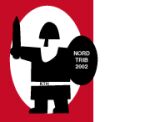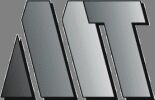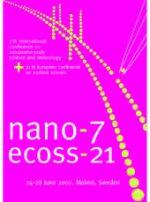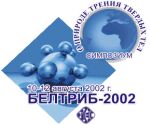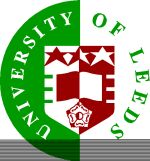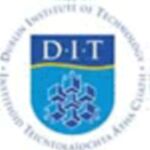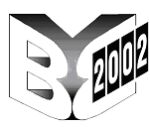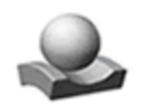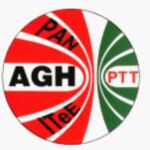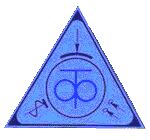 |
THE 4th INTERNATIONAL SYMPOSIUM ON TRIBO-FATIGUE
September 23-27 , 2002
Ternopil, Ukraine
|
| |
Problemy i perspektywy rozwoju lekkich i superlekkich samolotów (M02-7)
October 1-3 , 2002
Jałta
e-mail: atmu @ atmu.freenet.kiev.ua |
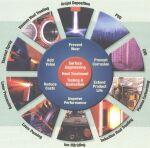 |
The 13th International IFHTSE/ASM Surface Engineering Congress
The 13th International Federation for Heat Treatment and Surface Engineering Congress
ASM International Surface Engineering Congress Exposition
7-10 0ctober 2002
Advance Registration ends 13 September, 2002. Register Online Today!
Advance Housing Registration ends 29 August, 2002.
Greater Columbus Convention Center • Columbus, Ohio USA
Co-located with ASM Materials Solutions Conference and Show and TMS Fall Meeting
| |
INTERNATIONAL WORKSHOP "TRIBOLOGY AND EMISSION PHENOMENA 2002"
October 17-19 , 2002
Prague, Czech Republic |
 |
ASIATRIB 2002 INTERNATIONAL CONFERENCE
October 21-24 , 2002
Cheju Island, Korea
Oral Paper Abstracts : October 31, 2001
Poster Paper Abstracts : December 31, 2001
Technical Sessions
- Advanced tribomaterials
- Biotribology
- MEMS
- Micro and nanotribology
- Computer-aided tribological design
- Dry and boundary lubrication
- Elastohydrodynamic and thermo-elastohydrodynamic lubrication
- Engine tribology
- Fluid film lubrication
- Fundamentals of friction and wear
- Lubricant and tribochemistry
- Additives
- Magnetic storage system
- Maintenance tribology
- Rolling and sliding contacts
- Solid lubrication
- Surface characterization and surface coatings
- Surface mechanics and thermoelastic contact problems
- Tribofailures
- Tribological machine elements
- Bearing and Sealing Technology
- Tribology in extreme environments
- Tribology in processing
- Tribology in manufacturing technology
- Rail and wheel technology
- Information technology in oil and gas industries
- Tribology for clean technology
- Chemical manufacturing polishing
- IT application for oil and gas industries
|
 |
ASME / STLE INTERNATIONAL JOINT TRIBOLOGY CONFERENCE 2002
October 27 - 30, 2002
Cancun, Mexico
Deadline for abstract: January 2, 2002
Program Topics
- Fluid Film Tribology (EHD, HD, gas bearings)
- Lubricants (oils, greases)
- Magnetic Storage Tribology
- Metalworking Tribology
- Rolling Element Bearings
- Machine Components Tribology (bearings, gears, clutches, seals etc.)
- Tribology Fundamentals (wear, friction, modeling, contact mechanics)
- Tribomaterials (solid lubricants, ceramics)
- Nanotribology
|
|
 |
AVS 49th INTERNATIONAL SYMPOSIUM
November 4-8, 2002
Denver, Colorado, USA
Deadline for abstract: April 29, 2002, 5:00 p.m. -- Paper/Fax
Deadline for abstract: May 6, 2002, 11:00 p.m. -- E-mail/Web
Topics
- Applied Surface Analysis
- Biomaterial Materials
- Dielectrics
- Electrochemistry
- Electronics
- Magnetic Interfaces and Nanostructures
- MicroElectroMechanical Systems
- Manufacturing Science and Technology
- Nanostructures
- Organic Films and Devices
- Processing at the Nanoscale
- Plasma Science
- Semiconductors
- Surface Engineering
- Surface Science
- Thin Films
- Vacuum Technology
- Advancing Toward Sustainability
- Biomaterials Plenary Session
- Nanotubes: Science & Applications
- Molecular-and Bio-Magnetism
- Photonics
|
 |
Einsatz synthetischer Schmierstoffe und Arbeitsflüssigkeiten in der Industrie und in Fahrzeugen
Prof. Dr.-Ing. Wilfried J. Bartz
T+S Tribologie und Schmieungstechnik,
Denkendorf (Deutschland)
e-mail anmeldung @ tae.de
6. - 8. November 2002
Ostfildern-Nellingen, An der Akademie 5
Veranstaltung
Nr. 28345/68.593
Mittwoch, 6. November 2002
8.30 bis 12.00 und 13.30 bis 16.30 Uhr
1. Grundflüssigkeiten synthetischer Schmierstoffe - vergleichende Betrachtung ihrer Eigenschaften (W. J. Bartz)
Grunde für den Einsatz synthetischer Schmierstoffe - Klassifizierung synthetischer Flussigkeiten nach Zusammensetzung und Herstellung - Vorteile und Nachteile - Vergleich bestimmter Einzeleigenschaften - Vergleich chemischer, physikalischer und technologischer Eigenschaften - Gesamh/ergleich synthetischer Schmierstoffe im Vergleich zu Mineralölen
2. Polyalphaolefine a/s Basisöle für Schmierstoffe (J. Muhlemeier)
Herstellung und chemischer Aufhau von Polyalphaolefinen - Handelsqualitäten und ihre Kenndaten - Eigenschaften und Vergleich zu Mineralöl - Bedeutung und Verwendung von PAOs als Basisöle in Schmierstoffen
3. Esteröle als Basisöle für Schmierstoffe (J. Muhlemeier)
Chemischer Aufbau von natürlichen und synthetischen Esterölen - Herstellung von synthetischen Esterölen - Die verschiedenen Gruppen von synthetischen Esterölen und ihre Eigenschaften - Ökologische und toxikologische Aspekte - Biologisch schnell abbaubare Schmierstoffe - Bedeutung und Verwendung von Estern als Basisöle für Schmierstoffe
4. Polyalkylenglykole - Struktur, Herstellung und Eigen-schaften (K. Pöllmann)
Rohstoffe und Herstellung - Unterschiede zu Kohienwasserstoffen - Einfluss der Struktur auf wichtige Eigenschaften - Schmiertechnische Eigenschaften - Biologisches Verhalten - Anwendungen - Ausblick aut zukünftige Entwicklungen
5. Ashless Additives for Synthetic and Natural Esters (P. C. Hamblin) (Vortrag in englischer Sprache)
Antioxidantien - EP/AW Additive - Korrosionsinhibitoren - Synergistische und antagonistische Wechselwirkungen - Konkurrenzreaktionen an der Obertläche - Testmethoden - Additive für umweltfreundliche synthetische Schmiermittel
Donnerstag, 7. November 2002
8.30 bis 12.30 und 14.00 bis 18.00 Uhr
6. Perfiuoralkyläther und Polyphenylather - Basisöle für Extremschmierstoffe (F. Wunsch)
Struktur und Synthese - Öle: chemische, thermische und oxidative Bestandigkeit; Verhalten gegen Metalle, Schmierungseigenschaften - Schmierfette, Formulierungen, chemisch-physikalische und technologische Eigenschaften - Additivierbarkeit - Einsatzmöglichkeiten
7 Traktionsfluide - Struktur, Eigenschaften und Anwendung (H. Vojacek, M. Simon)
Zusammenhang: Chemische Struktur und Reibungsverhalten - Einfluss von Walzgeschwindigkeit, Schlupf, Werkstoff, Makro- und Mikrogeometrie auf die Schwerkraftübertragung bei EHD-Bedingungen - Ausnutzbare Reibungszahl bei Bohrreibung - Ver-schleissverhalten - Einsatz im Reibradgetriebe und Freilauf
8. Synthetische Schmierfette (F. Wunsch)
Die Erweiterung der Leistungsgrenzen moderner Maschinen und Geräte sowie die Forderung nach Verlängerung der Nachschmierfristen machen den Einsatz von Schmierfetten auf Basis synthetischer Grundöle unentbehriich. In diesem Vortrag wird über die typischen Eigenschaften von synthetischen Schmierfetten in Abhängigkeit von ihrer Zusammensetzung und ihre Verwendung zur Schmierung von Wälzlagern bei hohen Drehzahlen, bei tiefen und hohen Temperaturen, in chemisch aggressiven Medien berichtet.
9. Synthetische Hydraulikflüssigkeiten (W. J. Bartz)
Aufbau wasserhaltiger und wasserfreier Hydraulikflüssigkeiten -Umweltvertrüglichkeit, Brandverhalten und technologische Eigenschaften im Vergleich zu Mineralölen - Werkstoff- und Konstruktionsprobleme - Walzlager - Einwirkungen von gasförmigen, flüssigen und festen Fremdstoffen
10. Wechselwirkungen zwischen Elastomeren, Schmierstoffen und Arbeitsflüssigkeiten (G. P. Streit)
Elastomere, Entropie und Energieelastizität, Glasübergangstemperatur - Physikalische Wechselwirkungen, Deformationsmechanisches Verhalten, thermische Effekte - Elastische Dichtungswerkstoffe, Elastomere, thermoplastische Elastomere - Wechselwirkungen zwischen Elastomeren und Arbeitsflüssigkeiten - Physikalische, chemische Wechselwirkungen mit Ölen auf Basis Mineralöl, Polyethylenglykolen, Estern und Exoten - Beispiele aus der Praxis: Fahrzeugbau, Maschinenbau, Elektronikindustrie, Papierindustrie - Welche Daten werden für Finite Elemente Berechnungen und für Simulationen des Dichtsystems benötigt? - Beispiele
Freitag, 8. November 2002
8.30 bis 12.15 und 13.30 bis 15.45 Uhr
11. Silicon-Öle als Basis für Hochleistungsschmierstoffe (D. Hesse)
Aufbau - Eigenschaften - Prüfergebnisse dieser Syntheseöle - Praxisanwendungen: als Schmierstoffe im Bereich hoher und tiefer Temperaturen, zur Langzeitschmierung unter dem Einfluss von Umgebungseinflüssen (Chemikalien, Lösungsmittel, Strahlung), als Hydraulikfiussigkeiten (Bremsflussigkeit), Wärmeübertragungsflüssigkeiten, Dämpfungsflüssigkeiten, Diffusionspumpenöle, Druckübertragungsmedien
12. Schmierung von Getrieben mit synthetischen Schmierstoffen (E. M. Laukotka)
Darstellung der verschiedenen Getriebetypen - Anforderungen an einen Getriebeschmierstoff - Schmierung mit Schwerpunkt auf diese Anforderungen - Wichtigste Anwendungsbereiche
13. Lebensdauerschmierung feinwerktechnischer Gleitlagerungen aus Thermoplasten (S. Beyer-Faiss)
Spezielle Anforderungen an die Schmierstoffe - Eingesetzte Schmierstoffgruppen - Eigenschaften und Prufüng - Wechsel-wirkungen der Schmierstoffe mit den Polymeren - Reibungs- und Verschleissverhalten - Schmierstoffauswahl - Praktische Anwendungen
14. Aufbau und Leistungsvermögen synthetischer Schmieröle für Kfz-Motoren- und -Getriebeöle (M. Voltz)
Schmierstoff-Anforderungen von Fahrzeug-Getrieben und Verbrennungsmotoren - Geeignete Grundole und deren Eigenschaften - Formulierung synthetischer Kfz-Motoren- und Getriebeöle - Vorteile bei der Anwendung: Thermisch-oxidative Stabiliät, Lebensdauer, V/T-Verhalten, Reibungsminderung, ggf. Bio-Abbaubarkeit
15. Biologiach schnell abbaubare Syntheseschmierstoffe (W. J. Bartz)
Anwendungsgebiete für biologisch schnell abbaubare Syntheseschmierstoffe in der tribologischen Praxis |
 |
Industrielle Tribologie Wechselwirkung Oberfläche / Schmierstoffe
Freitag, 29. November 2002
Tagungsort
Technologie- und Forschungszentrum
Wiener Neustadt
A 2700 Wiener Neustadt, Viktor Kaplan Straße 2, 1. Stock
Parkplatzmöglichkeiten direkt vor dem Haus
in Zusammenarbeit mit
TU Wien - Institut für Mikro- und Feinwerktechnik
Arbeitsbereich Tribologie und Konstruktion
und dem Mitveranstalter
Kosten:
Teilnahmeentgelt (exkl. 20 % MWSt.): € 109,00
Ermäßigtes Teilnahmeentgelt
für ÖTG- Mitglieder (exkl. 20 % MWSt.): € 89,00
Im Teilnahmeentgelt sind Tagungsunterlagen, Pausengetränke und Mittagsimbiss enthalten.
Kein Teilnahmeentgelt für Vortragende, sowie im Rahmen der ÖTG- Firmenmitgliedschaft (je nach gewählter Kategorie des ÖTG- Mitgliedsbeitrages)!
Tagungsort: Technologie- und Forschungszentrum
Wiener Neustadt
A 2700 Wiener Neustadt,
Viktor Kaplan Straße 2, 1 Stock
+43 (0) 2622- 81600
Parkplätze direkt vorm Haus
Tagungsbüro: ÖTG
A 1040 Wien,
Floragasse 7/ 2
Sekretariat
Fr. Martina N UHSBAUMER +43 (0) 1- 505 34 00- 1
+43 (0) 1- 505 34 00- 4
office @ oetg.at
www.oetg.at
Download als PDF Datei
Bankverbindung: CA (BLZ 11000), Konto 0964- 6606500
Anmeldung erbeten bis 15. November 2002 !
Programmänderungen vorbehalten !
Auf Ihre Teilnahme freuen sich
ÖSTERREICHISCHE TRIBOLOGISCHE
GESELLSCHAFT
Präsident: Univ. Prof. Dr. Friedrich F RANEK
und der Mitveranstalter
Österreichisches Kompetenzzentrum für Tribologie
SYMPOSIUM 2002
INDUSTRIELLE TRIBOLOGIE –
WECHSELWIRKUNG
OBERFLÄCHE/ SCHMIERSTOFF
09.00 Uhr Begrüßung und Eröffnung
09.15 Uhr Prof. Dr.- Ing. W. J. Bartz
Tribologie & Schmierungstechnik, Denkendorf, D
Grundlagen der Tribometrie
Einführung – Tribologie – Reibung und Verschleiß – Dynamische Mechanik tribologischer Systeme – Präzision von Prüfverfahren – Übertragbarkeit von Prüfergebnissen – Zusammenfassung
09. 50 Uhr Prof. H. Störi und Prof. W. S. M. Werner
Institut f. Allgem. Physik, TU Wien, A
Elektronenspektroskopie tribologischer Oberflächen
Elektronenspekroskopie ist besonders geeignet, extrem dünne Schichten und kleine Bereiche an Oberflächen zu analysieren. Im Hinblick auf die Anwendungen im AC˛ T werden die Methoden Augerelektronen- Spektroskopie (AES) und Photoelektronen- Spektroskopie (XPS, ESCA) anhand einiger Beispiele vorgestellt. Vorteile, Begrenzungen und alternative Methoden werden diskutiert.
10.10 Uhr Dr. P. Kelman, Dipl.- Ing. G. Zehethofer
AC˛ T, Wr. Neustadt, A
Einsatz der Metallographie u. Rasterelektronenmikroskopie in der tribologischen Schadensanalyse von Oberflächen
Um die Schadensursache defekter technischer Systeme bestimmen zu können, bedient sich der Schadensanalytiker verschiedener Auswertungen. Die Einsatzmöglichkeiten der Metallographie und Rasterelektronenmikroskopie werden anhand metallographischer Gefügeaufnahmen und Rasterelektronenbildern erläutert.
10. 30 Uhr Dr. A. Neuhaus
AC˛ T, Wr. Neustadt, A
Kinetik und Tribologie von elektromechanischen Schaltkontakten
Kinetische und Tribologische Parameter sind entscheidend für das Schaltverhalten und die Lebensdauer elektromechanischer Schaltkontakte (Relais, Mikroschalter etc.). Die Kinetikparameter müssen dabei im Hinblick auf das Verschweißen und die Materialwanderung einzeln untersucht werden. Zur Interpretation wurden zum Teil mathematisch/ mechanische Modelle herangezogen welche eine schlüssige Erklärung der Messergebnisse ermöglichen.
10.50 Uhr Kaffeepause
11.10 Uhr Dr. G. Preisinger
SKF Österreich AG, Steyr, A
Elektroerosion im geschmierten Kontakt zwischen Wälzkörper und Laufbahnen
Stromdurchgang in der Kontaktzone zwischen Wälzkörper und der Innen- und Außenringlaufbahn kann unter anderem Schmelzkrater (Elektroerosion) entstehen lassen. Teile des Kraterrandes brechen aus, werden überrollt und verschmutzen den Schmierstoff. Eine stark reduzierte Schmierstoffgebrauchsdauer oder sogar der kompletten Ausfall des Tribosystems „Wälzlager“ ist die Folge.
11.30 Uhr Dipl.- Ing N. Dörr, Doz. Dr. A. Ecker
ARC Seibersdorf, A
Schwefelverbindungen in Kraft- u. Schmierstoffen
Der Schwefelgehalt in Otto- und Dieselkraftstoffen wurde in den letzten Jahrzehnten stetig verringert. Diese Entwicklung ist auf die Forderung nach Umweltschutz einerseits und die steigenden Ansprüche an Motor und Katalysator andererseits zurückzuführen. Im Gegensatz dazu stellen Schwefelverbindungen wichtige Komponenten in Schmierstoffen dar, wo sie unter anderen als Verschleißschutz und Extreme- Pressure- Additive eingesetzt werden. Die Wirkung von Schwefelverbindungen in Kraft- und Schmierstoffen wird diskutiert.
11.45 Uhr Dipl.- Ing. E. Kenesey, Doz. Dr. A. Ecker
ARC Seibersdorf, A
Sauerstoffverbindungen in Kraft- u. Schmierstoffen
Sauerstoff ist in Kraft- und Schmierstoffen sowohl in gelöster Form als auch durch gezielt zugesetzte Sauerstoffverbindungen vertreten. Aufgrund der strengen Vorschriften für Kraftstoffe ist die Zugabe von Lubricity- Additiven zu Dieselkraftstoff notwendig geworden, um die erforderliche Schmierfähigkeit zu gewährleisten. Dafür eignen sich insbesondere sauerstoffhaltige Verbindungen. In Schmierstoffen sind Sauerstoffverbindungen in Basisölen und Additiven wie z. B. Antioxidantien und Friction Modifier enthalten.
12.00- 13.30 Uhr Mittagspause / Buffet
Special Event:
Besichtigung des Kompetenzzentrums für Tribologie
Möglichkeit zur Besichtigung des Österreichischen Kompetenzzentrums für Tribologie - AC2T
Posterpräsentation der Forschungsgruppen im Technologie- und Forschungszentrum Wr. Neustadt
13.30 Uhr Dr. A. Pauschitz, Prof. C. Kajdas, Prof. F. Franek
IMFT, TU- Wien, A, TU Warschau, PL
Tribologische Untersuchungen biologisch verträglicher Schmierstoffe - Teil 1
Eine zentrale Fragestellung bei der tribologischen Untersuchung mit Modellkörpern ist die Übertragbarkeit der Ergebnisse in die Praxis. Zur Beurteilung biologisch verträglicher Schmierstoffe wurden mehrere Untersuchungsmethoden, welche unterschiedlichen Belastungssituationen in der Praxis entsprechen, ausgewählt und die Verwendbarkeit der Methoden für derartige Schmierstoffe untersucht.
13.45 Uhr Prof. C. Kajdas, Dr. A. Pauschitz, Prof. F. Franek
TU Warschau, PL, IMFT TU- Wien, A,
Tribologische Untersuchungen biologisch verträglicher Schmierstoffe - Teil 2
Die Forderung nach biologisch und physiologisch einwandfreien Schmierstoffen fordert die Suche nach neuen Additiven. Die Leistungsfähigkeit unterschiedlicher Schmierstoffe mit biologisch verträglichen Additiven und die dabei auftretenden tribochemische Effekte wurden ermittelt.
14.00 Uhr Prof. Dr. B. Jakoby
Institut für Industrielle Elektronik & Materialwissenschaft, TU Wien, A
Online- Ölzustandsüberwachung für Verbrennungskraftmaschinen
Die Überwachung des Motorölzustandes in Verbrennungskraftmaschinen (z. B. in Kraftfahrzeugen) erlaubt die Realisierung vergrößerter Ölwechselintervalle. Dies bringt sowohl ökonomische als auch ökologische Vorteile. Überdies kann man durch die direkte Überwachung des Ölzustandes Rückschlüsse auf den momentanen Zustand des Motors ziehen was die frühzeitige Erkennung von möglichen Motorschäden unterstützt. In diesem Beitrag werden die Anforderungen an die zugrundeliegende Sensorik sowie der entsprechende Stand der Technik diskutiert.
14. 20 Uhr Dr. A. Merstallinger
ARC Seibersdorf research GmbH, Seibersdorf,
A Tribologische Werkstoffe in spezieller Umgebung (Vakuum)
In ungeschmierten Tribosystemen, in spezieller Umgebung, sind die Bildung von Reaktions- und Transferschichten, letztere v. a. zur Schmierung, von essentieller Bedeutung. Der Begriff „Spezielle Umgebungen“ umfasst neben Trockengleitreibung in Gasen (feuchte und trockene Luft, Stickstoff, Edelgase, etc.) auch Vakuum und einen Temperaturbereich von –100° C bis etwa +300° C. Es gibt eine kurze Vorstellung der Messmethodik und einige Anforderungen für Polymerwerkstoffe (basierend auf Polyimid).
14.40 Uhr Dr. Manish Roy
IMFT, TU- Wien,
A Influence of counter face material on elevated temperature wear of thermal sprayed nanocrystalline Cr3C2 -25( Ni20Cr) coating
Thermal sprayed Cr3C2 -25( Ni20Cr) coating showed promising performance under sliding wear particularly at elevated temperature, because of the ability at high temperature, formation of Cr2O3 scale and its ability to retain its strength at elevated temperature. The objective of the presented work was to investigate the effect of different counter face material on the elevated temperature wear of such coating.
15.00 Uhr Dipl.- Ing J. Wappis
Fachhochschule Wiener Neustadt,
A Studiengang Produktions- und Prozessdesign
Schnellere Abläufe und geringere Fehlerquoten entscheiden zunehmend über den Unternehmenserfolg. Der neue Studiengang „Produktions- und Prozessdesign“ an der FH Wr. Neustadt trägt dieser Herausforderung Rechnung. Angeboten wird ein Vollstudium (8 Semester) mit Basisausbildung und den Vertiefungsrichtungen „Umwelt– und Sicherheitstechnik“ sowie „Instandhaltung und Service“, beides mit einer Reihe von tribologierelevanten Ausbildungsfächern. Damit stehen in ca. 1, 5 Jahren erstmals in Österreich Absolventen mit einer vertieften Tribologieausbildung der Industrie zur Verfügung.
15.15 Uhr Abschlussdiskussion
15.30 Uhr Schlusswort
|
 |
AUSTRIB 2002
December 2-5, 2002
Perth, Australia
Deadline for abstract: February 28, 2002
Topics
- Fundamental Studies
- Lubrication and Lubricants
- Tribological Characteristics of Tribomaterials: metals, ceramics, synthetics, composites, etc.
- Surface Engineering
- Analysis of Tribosystems
- Practical Applications and Case Studies
- Monitoring and Maintenance of Tribosystems
- Industrial Tribology
- Nanotribology
- Bio-Tribology
AUSTRIB 2002 PRELIMINARY PROGRAM
Sunday, 1 Dec
16.00 - 19.00 Registration, Matilda Bay Room
19.00 - 21.00 Welcoming Cocktail Reception, Plaza Ballroom
Monday, 2 Dec
8.15 Opening Ceremony North Ballroom
Opening address
8.30-9.10 Keynote address, North Ballroom Friction and wear of ceramics and hard coatings, K. Kato, Tohoku University, Japan
9.15-10.35 Session A1 North Ballroom Wear of Ceramics Chairman
9.15 Model for estimating wear transition loads in ceramics, S. Jahanmir, NIST, USA
9.35 Mild to severe wear transition of ceramics, H. R. Pasaribu, J. W. Sloetjes, D. J. Schipper, University of Twente, The Netherlands
9.55 The critical condition for the transition from HL to ML in water lubricated SiC, X. Wang, K. Kato, K. Adachi, Tohoku University, Japan
10.15 9.15-10.35 Session B1 South Ballroom Hydrodynamic Lubrication Chairman
9.15 Thermohydrodynamic analysis of a worn plain journal bearing, M. Fillon, J. Bouyer, Universite de Poitiers, France
9.35 Dynamic characteristics and stability analysis of a wavy thrust bearing, H. Zhao, F. K. Choy, M. J. Braun, University of Akron, USA
9.55 Modelling of fluid flow in the grooves of a 3-axial groove water bearing using computational dynamics, D. J. Hargreaves, R. Pai, Queensland University of Technology, Australia
10.15 Dynamic performances of journal bearings lubricated with Maxwell Fluids: A mixed model, B. Bou-Said, B. Fantino, B. Najji, INSA, France
10.35-11.00 Morning tea
11.00-12.40 Session A2 North Ballroom Thin Surface Coatings Chairman
11.00 Mechanical and tribological properties of carbon nitride films deposited by unbalanced magnetron sputter ion plating, K. M. Wong and Y. G. Shen, City University of Hong Kong, China
11.20 Tribological behavior of Ti(C,N,O) coatings deposited by unbalanced magnetron sputtering, J. H. Hsieh, C. Li, A. C. Spowage and W. Wu, Nanyang Technological University, Singapore
11.40 Effects of oxide layer formed on TiN coated silicon wafer on the friction and wear characteristics in sliding, C-W. Cho, Y-Z. Lee, SungKyunKwan University, Korea.
12.00 Sliding wear and rolling contact fatigue of rough low friction coatings, F. Svahn, A. Kassman-Rudolphi, Uppsala University, Sweden
12.20 Effects of substrate bias polarity on tribological a-C:Ta coatings, D.Nilsson, E.Coronel, U.Wiklund, Uppsala University, Sweden
11.00-12.40 Session B2 South Ballroom EHL chairman
11.00 Pressure profiles measured within lubricated contacts in presence of dented surfaces. Comparison with numerical models, S.Coulon, I.Jubault, A.A.Lubrecht, F.Ville, P.Vergne, Institut Europeen de Tribologie, France
11. 20 An empirical model for the shear strength of lubricants at high pressures, G. T. Y. Wan, P. L. Wong, City University of Hong Kong, China
11.40 Shear stability of a viscosity index improved oil in EHL contact, D. J. Hargreaves, R. Pai, Queensland University of Technology, Australia
12.00 Experimental observation of a dimple-wedge elastohydrodynamic lubricating film, F. Guo, P. L. Wong, City University of Hong Kong, China
12.20 A boundary element procedure for the solution of the EHL problem of rolling line contacts by a Newtonian fluid, S. E. Sadique, S. Ramakrishna, S. Basri, S. M. Sapuan, M. M. H. Ahmed, National University of Singapore, Singapore
12.40 -14.00 LUNCH Terrace Ballroom
14.00-14.40 Keynote address North Ballroom Nanotribology: the link to macrotribology, S. M. Hsu, NIST, USA
14.45-16.05 Session A3 North Ballroom Surface Characterization/Nanotribology chairman
14.45 3-D characterization and classification of tribological surfaces, G. W. Stachowiak and P. Podsiadlo, University of Western Australia, Australia
15.05 Classification of tribological surfaces without surface parameters, P. Podsiadlo, G. W. Stachowiak, University of Western Australia, Australia
15.25 The effect of slider texture on the tribology of near contact recording sliders, L. Zhou, M. Beck, H. H. Gatzen, K. Kato, G. Vurens, F. E. Talke, University of California-San Diego, USA
15.45 Contact analysis of laser textured disks with thin overcoat, C-H. Huang, T-C. Hsu, Lee-Ming Institute of Technology, Taiwan
14.45-16.05 Session B3 South Ballroom Hydrodynamic/Hydrostatic Lubrication Chairman
14.45 Hydrodynamic effects of tailored inlet roughnesses: extended theory, K. Tonder, Norwegian University of Science and Technology, Norway
15.05 A comparison of techniques for identifying the configuration state of statically indeterminate rotor bearing systems, W.Hu, N.S.Feng, E.J.Hahn, University of New South Wales, Australia
15.25 Design considerations towards the construction of hybrid floating brush seal, S.B. Lattime, J. M. Braun, F.K.Choy, University of Akron, USA
15.45 Design of hydrostatic bearings - a simple approach, R. Sehgal, K. Pranshu, O. P. Gandhi, National Institute of Technology, H. P. , India
16.05-16.30 Afternoon tea
16.30-17.50 Session A4 North Ballroom Micro/Nanotribology Chairman
16.30 Hard disk drive air bearing design: Modified DIRECT algorithm and its application to slider air bearing surface optimization, H. Zhu, D. B. Bogy, University of California, USA
16.50 Micro-investigation of bushes for extreme working conditions, R. Bassani, E. Ciulli, University of Pisa, Italy
17.10 Predicting frictional behaviour of miniature journal polymer-on-polymer bearings, M. Kwacz, Z. Rymuza, Z. Kusnierewicz, Warsaw University of Technology, Poland
17.30 Friction reduction of ceramics by patterned micro dimples, M. Wakuda, Y. Yamauchi, S. Kanzaki, Y. Yasuda, Nissan Research Center, Japan 16.30-17.50 Session B4 South Ballroom Lubrication in Metal Forming Chairman
16.30 An elasto-plasto-hydrodynamic model of strip rolling with oil/water emulsion lubricant, A. Z. Szeri, S. H. Wang, University of Delaware, USA
16.50 Performance parameters of a mixed-film cold rolling process, Y. J. Liu, A. K. Tieu, University of Wollongong, Australia
17.10 Modelling of surface temperature in the mixed lubricated cold rolling, C. Lu, A. K. Tieu, Z. Y. Jiang, University of Wollongong, Australia
17.30 Numerical simulation of tribological effects on drawbeads in sheet metal forming, T-C. Hsu, J-H. Chen, C-H. Huang, Yuan Ze University, Taiwan
Tuesday, 3 Dec
8.30-9.10 Keynote address North Ballroom Aspects of erosive and abrasive wear testing, I. Hutchings, University of Cambridge, UK
9.15-10.35 Session A5 North Ballroom Abrasive/Erosive Wear Chairman
9.15 Scouring erosion resistance of metallic materials used in slurry pump service, R. J. Llewellyn, S. K. Yick, K. F. Dolman, National Research Council, Canada
9.35 Ball cratering tests of white cast irons, G. B. Stachowiak, G. W. Stachowiak, O. Celliers, University of Western Australia, Australia
9.55 A comparison of two-body and three-body abrasive wear in various wet and dry environments, M. S. Bingley, D. Roniotis, University of Greenwich, UK
10.15 Sliding and abrasive wear behaviour of boride coatings, C. Martini, G. Polombarini, G. Poli, D. Prandstraller, University of Bologna, Italy 9.15-10.35 Session B5 South Ballroom Cutting/Machining Chairman
9.15 The effect of coolant concentration on the machinability of nickel-base, Nimonic C-263, alloy, E. O. Ezugwu, J. Bonney, K. A. Olajire, South Bank University, UK
9.35 Wear control of metal cutting by external electromotive sources, M. El Mansori, F. Pierron, D. Paulmier, LMPF, France
9.55 The influence of tooth bite and cutting speed on wear of swaged saw teeth in timber cutting, J. Nordstrom, J. Bergstrom, Karlstad University, Sweden
10.35-11.00 Morning Tea
11.00-12.40 Session A6 North Ballroom Abrasive/Erosive Wear chairman:
11.00 A comparison of friction measurements made during wear on the linear abrasive wear tester with those on the Jenike shear tester, S. Mengistu, M. S. ingley, M. S. A. Bradley, University of Greenwich, UK
11.20 Sharpness of abrasive particles and surfaces, D. De Pellegrin, G. W. Stachowiak, University of Western Australia, Australia
11.40 Micro scratch evaluation of rock types - a means to comprehend rock drill wear, U.Beste, A. Lundvall, S.Jacobson, Uppsala University, Sweden
12.00 Heat treatment characteristics of high chromium cast iron for abrasive wear resistance, S. Inthidech, N. Sasaguri, P. Sricharoenchai, Y. Matsubara, Japan 11.00-12.40 Session B6 South Ballroom Condition monitoring/Failure analysis Chairman
11.00 Influence of oil temperature on gear failures, B-R. Hohn, K. Michaelis, Technical University of Munich, Germany
11.20 Analysis of bearing failure in radial piston pumps, R. Pai, D. J. Hargreaves, Queensland University of Technology, Australia.
11.40 Condition monitoring of oil lubricated ball bearing using wear debris and vibration analysis, J. K. Halme, VTT Industrial Systems, Finland
12.00 Monitoring lubrication condition and running clearance of rolling bearing via acoustic emission, R. Parrika, V. Vidqvist, E. Vaajoensuu, J. Tervo, VTT Technical Research Center, Finland
12.20 The application of similarity theory to gear scuffing, L.Zhao, M.Yu, Beijing University of Science and Technology, China
12.40 -14.00 LUNCH
14.00-14.40 Keynote address North Ballroom Wear modelling of polymer based composites, K. Friedrich, University of Kaiserslautern, Germany
14.45-16.05 Session A7 North Ballroom Abrasive/Erosive Wear Chairman:
14.45 Examination of erosion wear surfaces resulting from the impact of spinning angular-shaped particles, M. S. Bingley, T. Deng, M. S. A. Bradley, University of Greenwich, UK
15.05 Stress wave monitoring of individual particle impacts during erosion tests, S. P. Allen, N. W. Page and P. Dastoor, University of Newcastle, Australia
15.25 Analysis of diamond sawblade wear in stone sawing, J. Konstanty, University of Mining and Metallurgy, Poland
15.45 Interfacial reactions between diamond disk and granite during vertical spindle grinding, H. Huang, X. P. Xu, HuaQiao University, China
14.45-16.05 Session B7 South Ballroom Composite Materials Chairman
14.45 Fretting wear of Al-Si alloy matrix composites, H.Goto, K.Uchijo, Fukuoka iInstitute of Technology, Japan
15.05 Steady-state wear coefficient of A6061 aluminium alloy reinforced with alumina particles, L. J. Yang, Nanyang Technological University, Singapore
15.25 Highly reinforced wear resistant metal matrix composites with improved ductility, B. Brogle, D. J. Schipper, University of Twente, The Netherlands
15.45 Correlation between tribological and mechanical properties of short fibre/particle reinforced PEEK, Z. Zhang, C. Breidt, L. Chang, K. Friedrich, University of Kaiserslautern, Germany
16.05-16.30 Afternoon tea
16.30-17.50 Session A8 North Ballroom Hard Coatings/Surface Treatments Chairman
16.30 Effects of different surface treatments and coatings on the scuffing performance of hardened steel discs at very high sliding speeds, M. P. Alanou, H. P. Evans and R. W. Snidle, Cardiff University, UK
16.50 Wear and friction characteristics of electrolitic hard chrome and thermal sprayed WC-10Co-4Cr coatings sliding against Al-Ni-Bronze in Air at 20°C and at -40°C, P. L. Ko, M. F. Robetson, National Research Council of Canada, Canada.
17.10 Wear characteristics of thermal sprayed composite coatings of cermet with solid lubricant under dry sliding, P. K. Aw and B. H. Tan, Singapore Institute of Manufacturing Technology, Singapore.
17.30 16.30-17.50 Session B8 South Ballroom Metal Forming Chairman
16.30 Analysis of the surface roughness and friction coefficient in hot strip rolling, Z. Y. Jiang, A. K. Tieu, C. Lu, B. Ma, University of Wollongong, Australia
16.50 Abrasive wear between rough surfaces in deep drawing, M. A. Masen, M. B. de Rooji, University of Twente, The Netherlands
17.10 Friction variation in cold rolling process, Y. J. Liu, A. K. Tieu, University of Wollongong, Australia
17.30 A 3-D finite element method analysis of cold rolling of thin strip with friction variation, Z. Y. Jiang, A. K. Tieu, University of Wollongong, Australia Wednesday, 4 Dec
8.30-9.10 Keynote address North Ballroom Surface analytical studies of surface-additive interactions, by means of in situ and combinatorial approaches, N. Spencer, ETH, Switzerland 9.15-10.35 Session A9 North Ballroom Lubricants/Surface chemistry Chairman
9.15 The surface and tribological chemistry of chlorine- and sulfur-containing lubricant additives, F. Gao, P. V. Kotvis, W. T. Tysoe, University of Wisconsin-Milwaukee, USA
9.35 Boundary lubrication performance of free fatty acids in sunflower oil, N. J. Fox, B. Tyrer and G. W. Stachowiak, University of Western Australia, Australia
9.55 Characteristics of lubricants acceptable to food industry and performance in surface durability gears, S. Ezoe, K. Nagao, H. Obata, National Fisheries University, Japan
10.15 The Behaviour of diluted sooted oils in lubricated contacts, F.Chinas-Castillo, H.A.Spikes, Instituto Tecnologico de Oaxaca, Mexico
9.15-10.35 Session B9 South Ballroom Biotribology Chairman
9.15 The influence of bovine serum on the wear of cross -linked polyethylene finger prostheses, T. J. Joyce, A. Unsworth, University of Durham, UK
9.35 The role of proteins in the friction and wear of UHMWPE in sliding contact when lubricated by aqueous fluids, A. W. Batchelor, M. Chadrasekaran, Monash University, Malaysia Campus
9.55 The effects of surface active phospholipids on wear and lubrication of osteoarthritic sheep joints, C. Jones, H. Ozturk, G. W. Stachowiak and K. Stofel, University of Western Australia, Australia
10.35-11.00 Morning Tea
11.00-12.20 Session A10 North Ballroom Thin Surface Coatings chairman:
11.00 Modelling stresses and fracture in thin coatings, K. Holmberg, A. Laukkanen, H. Ronkainen, K. Wallin, S. Varjus, VTT Industrial Systems, Finland
11.20 Tribological properties of ion-implanted uni-directionally aligned silicon nitride, N. Nakamura, K. Hirao, Y. Yamauchi, S. Kanzaki, Fine Ceramics Research Centre, Japan
11.40 Microfriction and wear properties of YBCO films and polysilicon films, J. N. Ding, P. L. Wong, J. C. Yang, L. Cai, City University of Hong Kong, China
12.00 Deposition and tribological behaviour of nano-structured aluminium nitride and titanium nitride thin films, D. K. L. Wong, N. Jiang and Y. G. Shen, City University of Hong Kong.
11.00-12.20 Session B10 South Ballroom Biotribology chairman:
11.00 The wear of all UHMWPE articulations under various loading and motion conditions, T. J. Joyce, A. Unsworth, University of Durham, UK
11.20 Effect of carbon nanotube addition on tribological behaviour of UHMWPE, Y-S. Zoo, J-W. An, D-S. Lim, Korea University, South Korea
11.40 In vitro wear testing of metal-on-polymer metacarpophalangeal prostheses, T. J. Joyce, C. Rieker, A. Unsworth, University of Durham, UK
12.00 Finite element analysis of wear process in total hip joint implant model, N. Suhendra, G. W. Stachowiak, University of Western Australia, Australia
| | | |

